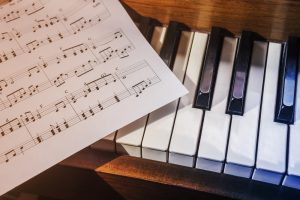Table of Contents
Come join us now, and enjoy playing your beloved music and browse through great scores of every level and styles!
Can’t find the songbook you’re looking for? Please, email us at: sheetmusiclibrarypdf@gmail.com We’d like to help you!
Sorabji: In the Hothouse (from Two Piano Pieces) sheet music, Noten, partitura, spartiti 楽譜

Best Sheet Music download from our Library.
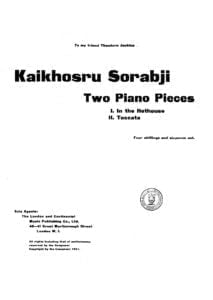
Please, subscribe to our Library.
If you are already a subscriber, please, check our NEW SCORES’ page every month for new sheet music. THANK YOU!
Browse in the Library:
Or browse in the categories menus & download the Library Catalog PDF:
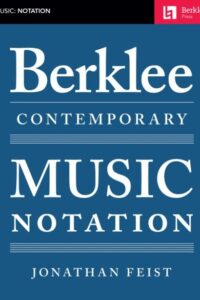
Who was Sorabji?
Kaikhosru Shapurji Sorabji: The Hermit of Modernist Maximalism
In the often-crowded pantheon of 20th-century composers, Kaikhosru Shapurji Sorabji (1892-1988) occupies a unique and enigmatic niche. A composer of staggering ambition, labyrinthine complexity, and self-imposed isolation, Sorabji crafted some of the most monumental, technically demanding, and stylistically idiosyncratic music ever conceived. His work, largely ignored during his lifetime and still challenging audiences today, represents a singular path through modernism – one defined by maximalism, intricate ornamentation, transcendental virtuosity, and a fierce, almost hermetic, independence.

Biography: A Self-Forged Identity
- Birth & Heritage: Born Leon Dudley Sorabji on August 14, 1892, in Chingford, Essex, England. His father was a Parsi engineer from India (thus the Persian-derived name Sorabji), and his mother was English-Spanish. This mixed heritage profoundly shaped his sense of identity, though he felt alienated from both cultures.
- The Name: Around 1914, he legally changed his name to Kaikhosru Shapurji Sorabji. “Kaikhosru” and “Shapurji” were Persian names chosen for their resonance and connection to ancient Persian history and Zoroastrianism, reflecting his deliberate construction of a unique persona.
- Musical Formation: Largely self-taught. He received some piano lessons in his youth but had no formal composition training. His musical education came through voracious listening, score study (especially Bach, Liszt, Busoni, Debussy, Ravel, Scriabin, Szymanowski, Medtner), and wide reading in literature, philosophy, and the occult.
- Early Career & Criticism: Worked as a music critic (under the pseudonym “S. Godfrey”) for outlets like The New Age and The New English Weekly from the 1910s to the 1930s. His critiques were famously acerbic, insightful, and often scathing, particularly targeting English musical provincialism and composers he deemed mediocre (which was most of them).
- The Recluse: Deeply disillusioned by the musical establishment and critical reception to his early performances (which were rare and often controversial), Sorabji gradually withdrew from public musical life starting in the late 1930s. After his mother’s death in 1940, he retreated almost completely to his secluded home “The Eye” in Corfe Castle, Dorset, where he lived with his companion, Reginald Norman Best, until his death. He forbade performances of his music for decades.
- The Ban Lifted: In 1976, pressured by a growing underground interest spearheaded by pianists like Yonty Solomon and Alistair Hinton (who later became his literary executor), Sorabji reluctantly lifted the ban on performances, provided he approved the performer.
- Death: Sorabji died on October 15, 1988, in Winfrith Newburgh, Dorset, leaving behind a colossal legacy of unpublished manuscripts.
Works: Monuments of Sound

Sorabji’s output is vast and overwhelmingly dominated by solo piano music, though he also composed orchestral works, chamber music, organ symphonies, and songs. His works are renowned for their extreme length, density, and technical difficulty, pushing the boundaries of playability.
- Key Masterpieces:
- Opus Clavicembalisticum (1930): His most famous (or infamous) work. A colossal 4+ hour piano epic in 12 movements (including fugues, passacaglias, toccatas, cadenzas), often considered one of the most challenging solo piano works ever written. A summit of contrapuntal complexity and virtuosic display.
- Symphonic Variations for Piano (1935-37): Another monumental work, exploring vast variation forms over an extended duration.
- Sequentia Cyclica super “Dies iræ” ex Missa pro Defunctis (1948-49): A massive cycle of 27 variations on the “Dies Irae” chant, demonstrating his intricate contrapuntal and transformative skills.
- 100 Transcendental Studies (1940-44): True to their name, these studies explore extreme technical and expressive demands far beyond those of Liszt or Chopin.
- Symphonies for Solo Piano: Several exist, including his Symphony No. 2 (“Jāmī”), blending orchestral textures and scope onto the piano.
- Gulistān – Nocturne for Piano (1940): A prime example of his lush, perfumed, and incredibly intricate “Persian”-inspired style.
- Concerti: He wrote several for solo piano and orchestra (e.g., Concerto per suonare da me solo e senza orchestra, per divertirsi), which are symphonic in scale and require superhuman virtuosity.
- Symphonies for Organ: Vast, complex works exploring the sonic possibilities of the instrument.
Analysis of Style: A Universe of Complexity
Sorabji’s style is instantly recognizable yet difficult to categorize. It synthesizes diverse elements into a unique and overwhelming whole:
- Maximalism: This is the defining characteristic. Sorabji embraced extremes:
- Length: Works lasting several hours are common.
- Density: Highly polyphonic textures, often with multiple independent melodic lines woven together in complex counterpoint (influenced by Bach, Busoni).
- Virtuosity: Demands transcendental technique – cascades of notes, complex polyrhythms, wide leaps, immense power, and extreme delicacy. He wrote as if the pianist had four hands.
- Ornamentation: Baroque-like ornamentation (trills, mordents, turns, grace notes) is ubiquitous, often layered and integral to the texture, creating shimmering, kaleidoscopic surfaces (influenced by Scriabin, Szymanowski, Middle Eastern/Persian music).
- Dynamic Range: From barely audible whispers to thunderous, percussive climaxes.
- Harmony: A complex fusion:
- Rooted in late-Romantic chromaticism (Scriabin, Szymanowski, early Schoenberg).
- Freely employed dissonance, clusters, and intricate chord structures.
- Often retained a sense of tonal centers or polarity, even amidst dense chromaticism (unlike strict atonality).
- Incorporated modal inflections, sometimes evoking Persian or Spanish flavors.
- Rhythm: Highly complex and fluid:
- Frequent use of polyrhythms (multiple simultaneous rhythms), cross-rhythms, and nested tuplets (triplets within quintuplets, etc.).
- Tempo often fluctuates wildly, requiring immense control.
- A sense of improvisatory freedom within highly structured forms.
- Form: Often large-scale, complex, and idiosyncratic:
- Favored variations (passacaglias, chaconnes), fugues, toccatas, and intricate multi-movement structures (like the Opus Clavicembalisticum).
- Forms were often expansive and cumulative, building through layered repetition and intensification rather than traditional development.
- Architecture was paramount, even in the densest textures.
- Influences (Assimilated, Not Imitated):
- Ferruccio Busoni: The most profound influence. Busoni’s ideas of “Young Classicism,” the transcendental potential of the piano, the fusion of Bachian counterpoint with modern harmony, and the concept of “Junge Klassizität” resonated deeply. Sorabji dedicated his Opus Clavicembalisticum to Busoni’s memory.
- Franz Liszt: Virtuosity, thematic transformation, large-scale forms, and the symphonic poem concept translated to piano.
- J.S. Bach: Contrapuntal mastery, structural rigor, and the use of forms like fugue and passacaglia.
- Alexander Scriabin: Mysticism, harmonic language, dense textures, and ecstatic climaxes.
- Karol Szymanowski: Sensuous harmony, intricate ornamentation (especially in the “Persian” inspired works like Métopes and Masques), and voluptuous textures.
- Debussy & Ravel: Color, texture, exoticism, and pianistic refinement.
- Mediterranean & Persian Cultures: While not authentically recreating these styles, he evoked their essence through ornamentation, melodic turns, and titles (Gulistān, Jāmī), reflecting his fascination with his Persian heritage and the wider Orient.
- Aesthetic: Sorabji’s music aimed for:
- Transcendence: Pushing beyond perceived limits of instrument, performer, and listener.
- Luxuriance & Opulence: A rich, sensual, almost decadent sound world.
- Intellectual Rigor: Underlying the sensual surface was meticulous structural planning.
- Individualism: A complete rejection of prevailing trends (serialism, neoclassicism, minimalism) in favor of his own uncompromising vision.
Legacy: From Obscurity to Cult Status
Sorabji’s legacy is complex and evolving:
- Decades of Neglect: His self-imposed exile and performance ban meant his music was virtually unknown outside a tiny circle for nearly 40 years. Manuscripts were inaccessible, unplayable, and unpublished.
- The Pioneers (1970s-): The lifting of the ban sparked interest. Pianists like Yonty Solomon, Michael Habermann, Geoffrey Douglas Madge (who made the first complete recording of Opus Clavicembalisticum in 1977), and later Marc-André Hamelin, Jonathan Powell, Fredrik Ullén, and Ronald Stevenson began the monumental task of learning, performing, and recording his works. This required immense dedication and technical prowess.
- Publication & Scholarship: The Sorabji Archive, established by Alistair Hinton (Sorabji’s literary executor), has been crucial in cataloging, editing, and facilitating the publication of scores (primarily by Dover Publications and The Sorabji Music Archive). Scholarly work is gradually increasing.
- Recordings Renaissance: The CD era and digital distribution (YouTube, streaming) have been transformative. Dedicated labels (Altarus, BIS, Toccata Classics, Piano Classics) have released numerous recordings, making this once-inaccessible music available globally. Complete cycles of the 100 Studies and other major works are underway.
- The Cult & The Challenge: Sorabji remains a “composer’s composer” and a cult figure. His music is not mainstream concert fare due to its extreme demands and duration. However, it commands deep respect and fascination among pianists, composers, and listeners drawn to its unique sound world and uncompromising vision. He is seen as the ultimate iconoclast, forging a path utterly independent of 20th-century musical fashions.
- Influence: His direct influence on other composers is hard to pinpoint due to his obscurity, but he stands as a powerful symbol of uncompromising artistic integrity and the exploration of extreme complexity and virtuosity. Composers interested in maximalism, intricate counterpoint, or pushing pianistic limits inevitably encounter his shadow.
- Copyright Controversy: The complex copyright status of his works (involving the Sorabji Archive and publishers) has sometimes been a point of friction within the community of performers and scholars seeking access.
Sorabji: The Solitary Giant
Kaikhosru Shapurji Sorabji was a true original. He inhabited a musical universe entirely of his own making, synthesizing diverse influences into a style characterized by unparalleled complexity, sensuous opulence, and transcendental ambition. His deliberate withdrawal from the world ensured decades of obscurity, but the dedication of pioneering performers and the power of recording technology have brought his extraordinary soundscapes to light. While his music remains challenging and demanding, it offers unparalleled rewards: a journey into a world of labyrinthine beauty, overwhelming power, and intellectual fascination. Sorabji stands as a testament to the power of an utterly individual artistic vision, uncompromising in its scope and ambition, a solitary giant whose monumental creations continue to challenge and inspire. He redefined the possible for the piano and left a legacy that continues to unfold as more performers dare to scale his musical Himalayas.
“In the Hothouse” is one of Sorabji’s most evocative and frequently performed works, serving as a perfect entry point into his dense, sensuous sound world. Here’s a detailed look at this fascinating piece:
Context: Two Piano Pieces (1918)
- Composed: 1918 (early in Sorabji’s career, age 26).
- Publication: First published in 1920, making it one of the earliest Sorabji works available in print.
- The Pair: “In the Hothouse” is paired with “Toccata” – a contrasting, hyper-virtuosic, and structurally complex piece showing his Busoni/Liszt influences. “In the Hothouse” offers the sensual, atmospheric counterpoint.
- Significance: Represents Sorabji’s early mastery of texture, harmony, and evocative atmosphere. It predates his gargantuan works but already displays his unique voice.
“In the Hothouse”: A Sensory Immersion
- Title & Imagery: The title instantly conjures an environment: humid, lush, teeming with exotic, overripe plant life, heavy perfumes, and stifling, enclosed heat. Sorabji translates this sensory overload into sound.
- Form & Structure: Relatively free and rhapsodic. It unfolds as a continuous, organic stream of consciousness rather than adhering to strict classical forms. Think of it as an elaborate, decadent arabesque.
- Style & Character:
- Extreme Sensuality: This is the defining feature. The music drips with lush, complex harmonies and suffocatingly rich textures.
- Harmony: Deeply chromatic, rooted in late Scriabin and early Szymanowski. Expect dense, constantly shifting chords: augmented harmonies, whole-tone inflections, unresolved dissonances creating tension, and sudden moments of surprising consonance like shafts of light piercing foliage. It avoids traditional tonality but gravitates around implied centers.
- Texture: Thick, layered, and constantly in motion. Tremolos, trills, rapid filigree (ornamental passages), and cascading arpeggios create a shimmering, humid haze. Melodies are often embedded within this dense undergrowth rather than standing clearly apart. The writing often requires the pianist to sustain multiple layers simultaneously.
- Rhythm: Fluid and flexible, often obscured by the sheer density of notes and ornamentation. Rubato (expressive tempo fluctuations) is essential. While less overtly complex polyrhythmically than his later works, the rhythmic flow feels organic and improvisatory.
- Dynamics & Articulation: Wide dynamic range, often shifting suddenly between extremes (e.g., thunderous climaxes collapsing into fragile whispers). Articulation varies from sharp staccatos to legatissimo passages that blur together. Pedaling is crucial for sustaining the harmonic haze and creating resonance.
- Ornamentation: Quintessential early Sorabji. Trills, mordents, turns, and grace notes are not mere decoration; they are the texture, creating constant flickering movement and contributing to the claustrophobic, teeming atmosphere. This foreshadows the intricate ornamentation dominating his mature style.
- Emotional Landscape: Evokes opulence, decadence, languor, mystery, stifling heat, hidden dangers, and overwhelming sensory stimulation. There’s a sense of beauty bordering on the grotesque due to its sheer intensity.
Influences Audible in “In the Hothouse”
- Scriabin (Primary): The harmonic language (mystic chords, unresolved dissonance, ecstatic climaxes), the sensual atmosphere, and the use of trills/tremolos are deeply indebted to Scriabin’s late sonatas and poems (e.g., Vers la flamme). Sorabji pushes Scriabin’s decadence further.
- Szymanowski: The opulent textures, perfumed harmonies, and “orientalist” exoticism (though abstracted here) strongly recall Szymanowski’s “Métopes” or “Masques,” which Sorabji admired deeply.
- Debussy: The focus on atmosphere, texture, and harmonic color (whole-tone scales, parallel chords) shows Debussy’s influence, though rendered with far greater density and intensity.
- Ravel: The virtuosic filigree and lush harmonies (think “Gaspard de la Nuit,” especially “Ondine” or “Le gibet”) are a touchstone, again amplified.
- Liszt: The rhapsodic freedom and dramatic gestures hint at Liszt, though filtered through a post-Scriabinesque lens.
Performance Challenges
- Texture & Balance: Maintaining clarity amidst the dense, rapidly shifting textures is paramount. The pianist must carefully voice chords and layers to prevent muddiness while sustaining the essential harmonic haze.
- Ornamentation as Texture: Executing the constant ornamentation smoothly and evenly, integrating it into the melodic and harmonic flow rather than treating it as mere decoration.
- Dynamic Control: Navigating the extreme dynamic contrasts and sudden shifts without sounding jarring. Creating a true pianissimo shimmer within complexity is incredibly difficult.
- Rubato & Phrasing: Applying expressive tempo fluctuations naturally while maintaining the overall structural coherence and forward momentum of the rhapsodic form.
- Pedaling: Using the pedal to create resonance and blend without causing harmonic blurring or loss of rhythmic definition. Requires exceptional sensitivity.
- Stamina & Focus: While shorter than his later works (typically 12-15 minutes), the piece demands intense concentration and physical control to sustain the atmosphere and navigate the technical intricacies.
Legacy & Significance of “In the Hothouse”
- Accessibility: It remains one of Sorabji’s most “accessible” works due to its evocative title, relatively shorter duration, and concentrated expression. It’s a frequent choice for pianists introducing audiences to Sorabji.
- Blueprint: It serves as a crucial blueprint for Sorabji’s mature style, showcasing his core preoccupations: sensuality, harmonic density, intricate ornamentation as texture, and atmospheric evocation, all present in embryonic form.
- Performance History: Despite Sorabji’s later ban, “In the Hothouse” (along with the Toccata) was one of the few pieces occasionally performed during his lifetime (e.g., by Sorabji himself and pianist Reginald Paul) and became a key work for the pioneering generation post-1976 (Yonty Solomon, Michael Habermann, Marc-André Hamelin, Jonathan Powell, Fredrik Ullén).
- Gateway Piece: It functions as a vital “gateway drug” into Sorabji’s world. Its success in conveying its intense atmosphere often encourages listeners to explore his more monumental, complex works.
- Standalone Masterpiece: Regardless of its role as an introduction, it stands as a perfectly formed and powerful piece of early modernist piano writing, a miniature tone poem of extraordinary evocative power.
“In the Hothouse” is a sun-drenched, overripe, and intoxicating immersion into Sorabji’s unique aesthetic. It captures the essence of his sensual maximalism in a concentrated dose, showcasing his debt to Scriabin and Szymanowski while asserting his own distinct voice. Its evocative power, technical brilliance, and relative brevity ensure its enduring place as one of his most beloved and frequently performed works, offering a compelling glimpse into the hothouse of Sorabji’s extraordinary musical imagination.
| Artist or Composer / Score name | Cover | List of Contents |
|---|---|---|
| Bill Evans – One for Helen | Bill Evans – One for Helen | |
| Bill Evans – Only Child transcription |
 |
|
| Bill Evans – Piano Solos |
 |
Bill Evans Piano solos |
| Bill Evans – Rare Transcriptions 3 | Bill Evans – Rare transcriptions vol. 3 sheet music | |
| Bill Evans – Rare transcriptions vol.1 | Bill Evans – Rare transcriptions vol.1 sheet music | |
| Bill Evans – Rare transcriptions vol.2 | Bill Evans – Rare transcriptions vol. 2 sheet music | |
| Bill Evans – Remembering The Rain.mscz | ||
| Bill Evans – Santa Claus Is Coming To Town |
 |
|
| Bill Evans – Signature Licks – Piano Transcriptions |
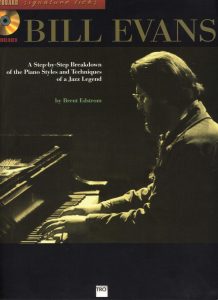 |
Bill Evans – Signature Licks – Hal Leonard – Piano Transcriptions |
| Bill Evans – Skating in Central Park (Solo) from Undercurrent with Jim Hall |
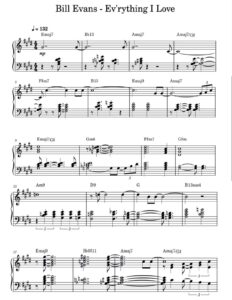 |
|
| Bill Evans – Someday My Prince Will Come from Portrait in Jazz sheet music Transcription | Bill Evans piano-solo-Someday my prince will come | |
| Bill Evans – Star Eyes (melody transcription) from The Universal Mind of Bill Evans | Bill Evans – Star Eyes (melody transcription) from The Universal Mind of Bill Evans (first page sample) | |
| Bill Evans – Star Eyes (melody transcription) from The Universal Mind of Bill Evans.mscz | ||
| Bill Evans – The 70’S Solo Piano |
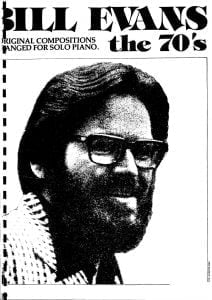 |
Bill Evans – The 70’S, Solo Piano |
| Bill Evans – The Artistry Of Bill Evans (Songs And Improvisation Transcriptions by Pascal Wetzel) |
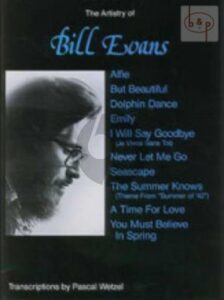 |
Bill Evans sheet music |
| Bill Evans – The Artistry Of Bill Evans Volume 2 (transcriptions by Bob Hinz) |
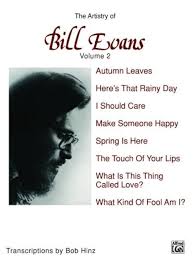 |
Bill Evans – The Artistry Of Bill Evans Volume 2 (transcriptions by Bob Hinz) |
| Bill Evans – The Dolphin piano solo transcription | Bill Evans – The Dolphin piano solo transcription | |
| Bill Evans – The Dolphin Transcription sheet music |
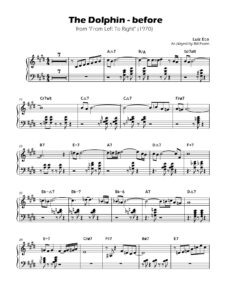 |
|
| Bill Evans – The Last Compositions |
 |
Bill Evans – The Last Compositions |
| Bill Evans – Theme From Mash |
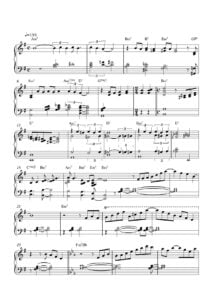 |
|
| Bill Evans – Turn out the Stars | Bill Evans – Turn out the Stars_compressed | |
| Bill Evans – Turn Out The Stars – Bill Evans (Transcription) Jazz Standard sheet music (from Some Other Time) | Bill Evans – Turn Out The Stars – Bill Evans (Transcription) Jazz Standard sheet music | |
| Bill Evans – Very Early |
 |
|
| Bill Evans – Very Early Live In Paris [1972] solo transciption |
 |
|
| Bill Evans – We will meet again from The 70’S Solo Piano |
 |
|
| Bill Evans (1969) Emily sheet music transcription |
 |
|
| Bill Evans 4 New Versions Of Bill Evans Tunes Taken From His Recordings |
 |
Bill Evans_4 New Versions Of Bill Evans Tunes Taken From His Recordings |
| Bill Evans Autumn Leaves (as played in Portrait in Jazz) complete transcription | Bill Evans Autumn Leaves (as played in Portrait in Jazz) complete transcription | |
| Bill Evans B Minor Waltz Transcription | Bill Evans B Minor Waltz Transcription | |
| Bill Evans But Beautiful transcription | Bill Evans But Beautiful transcription | |
| Bill Evans Collection For Solo Guitar |
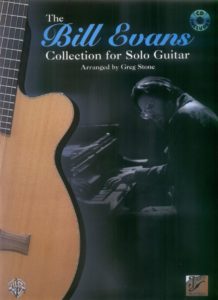 |
Bill Evans Collection For Solo Guitar |
| Bill Evans Danny Boy, by Frederic Weatherly | Danny Boy, by Frederic Weatherly (Bill Evans Jazz version) | |
| Bill Evans Emily |
 |
|
| Bill Evans Fake Book (60 original compositions transcribed and edited by Pascal Wetzel) |
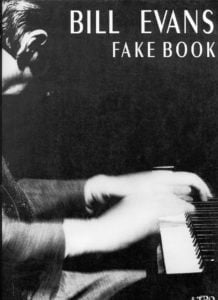 |
Bill Evans Fake Book (60 original transc.)  |
| Bill Evans Five |
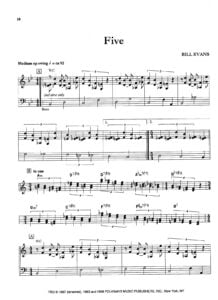 |
|
| Bill Evans For All We Know (We May Meet Again) Piano Solo Transcription | Bill Evans For All We Know (We May Meet Again) | |
| Bill Evans How My Heart Sings – as played by Bill Evans | Bill Evans How My Heart Sings – as played by Bill Evans | |
| Bill Evans How My Heart Sings By Pettinger Peter (Book) |
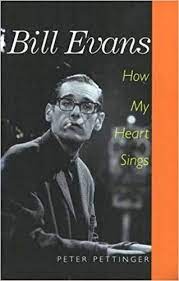 |
|
| Bill Evans Israel (Transcription) by John Carisi | Bill Evans Israel (Transcription) by John Carisi-1 | |
| Bill Evans Jazz Piano Transcriptions |
 |
Bill Evans Jazz Piano Transcriptions |
| Bill Evans Jim Hall – Romain from Undercurrent |
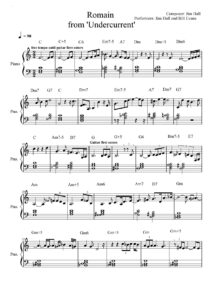 |
|
| Bill Evans Like Someone In Love sheet music transcription (1962 Sessions) | Bill Evans April Like Someone In Love sheet music transcription (1962 Sessions) | |
| Bill Evans Michel Legrand What are you doing the rest of your life (transcription) | Bill Evans Michel Legrand What are you doing the rest of your life (transcription) | |
| Bill Evans Midnightmood |
 |
|
| Bill Evans Minority Transcription | Bill Evans Minority Transcription | |
| Bill Evans Nardis (Bill Evans Trio) |
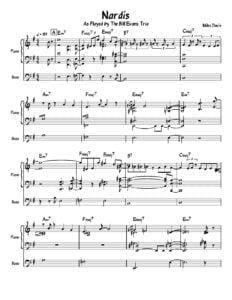 |
|
| Bill Evans Oleo (Transcription) | Bill Evans Oleo | |
| Bill Evans Omnibook For Piano Transcribed exactly from his recorded solos |
 |
Bill Evans Omnibook For Piano Transcribed exactly from his recorded solos |
| Bill Evans Perfect Piano Score |
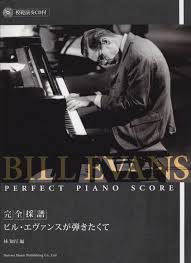 |
Bill Evans Perfect Piano Score |
| Bill Evans Piano Interpretations |
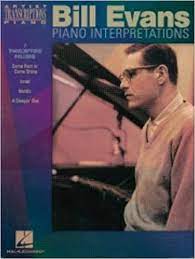 |
Bill Evans-Piano Interpretations sheet music library |
| Bill Evans Piano Solo Transcriptions |
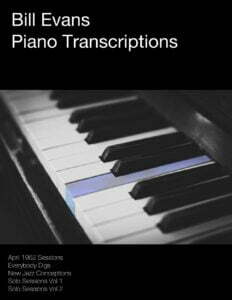 |
Bill Evans Piano Solo Transcriptions |
| Bill Evans Plays – Original Compositions Solo Transcriptions |
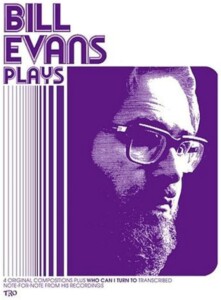 |
Bill Evans Plays |
| Bill Evans Plays Duke Ellington Reflections In D |
 |
|
| Bill Evans Plays Standards |
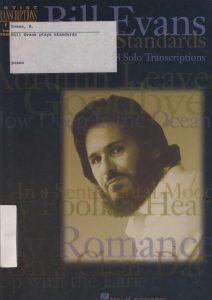 |
Bill Evans Plays Standards sheet music |
| Bill Evans Quiet Now (Jazz Standard) Transcription |
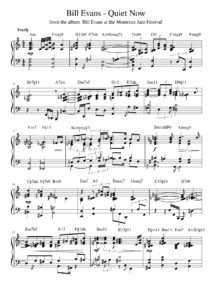 |
|
| Bill Evans Santa Claus Is Coming To Town Transcription |
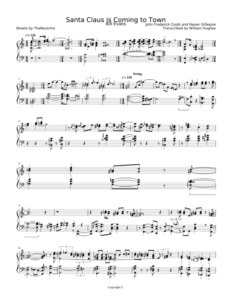 |
|
| Bill Evans Solo Sessions Vol 1 Everything Happens To Me |
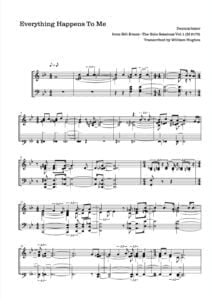 |
|
| Bill Evans Solo Sessions Vol 2 What Kind Of Fool Am I |
 |
|
| Bill Evans Solo Sessions Vol1 April In Paris |
 |
|
| Bill Evans Someday My Prince Will Come Piano Solo | Bill Evans Someday my prince will come piano solo | |
| Bill Evans Songbook Jazz Piano Solos Series, Volume 19 (Bill Evans) 24 Selections |
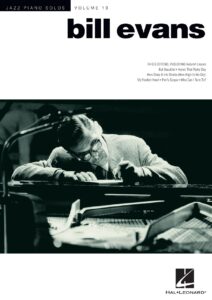 |
Bill Evans Songbook Jazz Piano Solos Series, Volume 19 (Bill Evans) |
| Bill Evans Stella By Starlight Jazz Standard The Bill Evans Trio Vol 2 Transcription |
 |
|
| Bill Evans Tenderly Everybody Digs | Bill Evans Tenderly Everybody Digs | |
| Bill Evans The Bill Evans Trio Vol 1 |
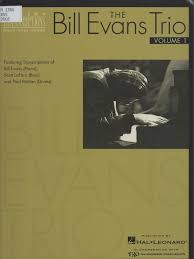 |
bill-evans-trio-Volume 1 1956-1961-transcriptions sheet music |
| Bill Evans The Bill Evans Trio Vol 2 |
 |
Bill Evans The Bill Evans Trio Vol 2 |
| Bill Evans The Bill Evans Trio Vol 3 |
 |
Bill Evans The Bill Evans Trio Vol 2 |
| Bill Evans The Harmony Of Bill Evans by Jack Reilly |
 |
The Harmony Of Bill Evans (Piano Score) |
| Bill Evans The Mastery Of Bill Evans Artist Piano Transcriptions (a close look at two classic compositions: Waltz for Debby and Very Early) by Pascal Wetzel |
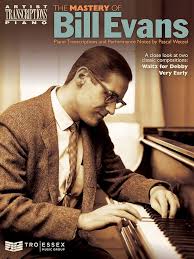 |
Bill Evans The Mastery Of Bill Evans Artist Piano Transcriptions |
| Bill Evans Time Remembered (lead sheet) | Bill Evans Time Remembered | |
| Bill Evans Transcription sheet music of April, 1962 Sessions Danny Boy |
 |
|
| Bill Evans Transcription sheet music of April, 1962 Sessions Easy To Love |
 |
|
| Bill Evans Transcription sheet music of April, 1962 Sessions In Your Own Sweet Way |
 |
|
| Bill Evans Transcription sheet music of April, 1962 Sessions Like Someone In Love |
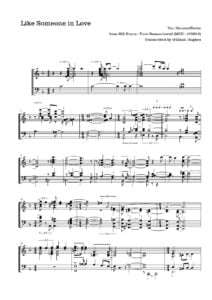 |
|
| Bill Evans Transcription sheet music of Everybody Digs Peace Piece |
 |
|
| Bill Evans Transcription sheet music of New Jazz Conceptions Waltz For Debby |
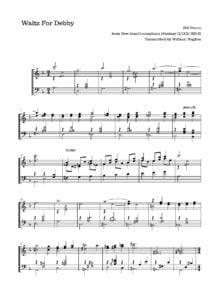 |
|
| Bill Evans Transcription sheet music of Solo Sessions Vol.1 Medley My Favourite Things, Easy To Love, Baubles, Bangles And Beads |
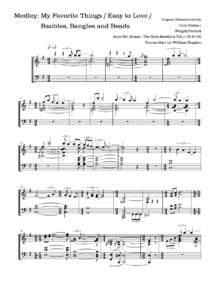 |
|
| Bill Evans Transcription sheet music of Solo Sessions Vol.2 I Loves You, Porgy (Complete Transcription) |
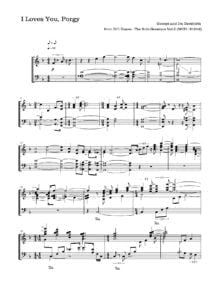 |
|
| Bill Evans Transcription sheet music of Solo Sessions Vol.2 Love Is Here To Stay |
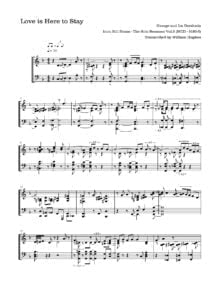 |
|
| Bill Evans Transcription sheet music of Solo Sessions Vol.2 Medley Autumn In New York, How About You |
 |
|
| Bill Evans Transcription sheet music of Solo Sessions Vol.2 Santa Claus Is Coming To Town |
 |
|
| Bill Evans Transcriptions (Own Tunes and tunes by Earl Zindars) |
 |
Bill Evans Transcriptions (Own Tunes and tunes by Earl Zindars) |
| Bill Evans Trio – Jazz improvisation (Transcriptions) |
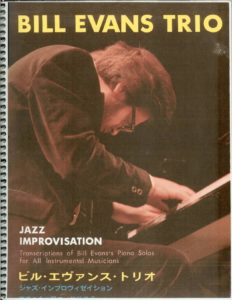 |
Bill Evans Trio – Jazz improvisation (Transcriptions) |
| Bill Evans Turn Out Star | ||
| Bill Evans We Will Meet Again |
 |
|
| Bill Evans When I Fall In Love |
 |
|
| Bill Evans You Go to my Head Piano solo (Omnibook For Piano Transcribed exactly from his recorded solos) Haven Gillespie J. Fred Coots | Bill Evans You Go to my Head Piano solo (Omnibook For Piano Transcribed exactly from his recorded solos) Haven Gillespie J. Fred Coots | |
| Bill Evans- Body And Soul Transcription |
 |
|
| Bill Frisell – St. Louis Blues Guitar Solo Transcription | Bill Frisell – St. Louis Blues Guitar Solo Transcription | |
| Bill Frisell An Anthology |
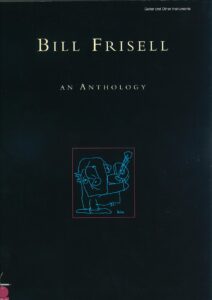 |
Bill Frisell An Anthology |
| Bill Frisell The Guitar Artistry Of (DVD online access) |
 |
Bill Frisell Guitar Artisrty |
| Bill Gaither Homecoming Souvenir Songbook Coolectors Edition |
 |
|
| Bill Haley Rock Around The Clock Bill Haley & The Comets Easy Piano Solo |
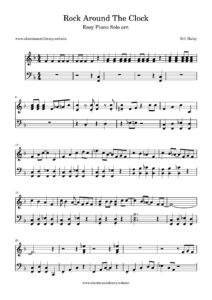 |
|
| Bill Haley – Rock Around The Clock | ||
| Bill Hart Solo Jazz Guitar The Complete Chords Melody Method with TAB |
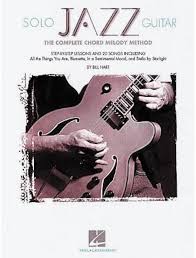 |
|
| Bill Holman Front Runner Full Band Score |
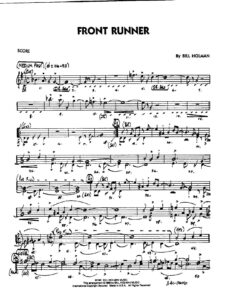 |
|
| Bill Holman Kingfish Full band score |
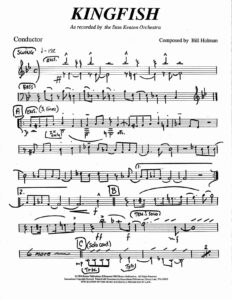 |
|
| Bill Holman Malaga – Full Big Band |
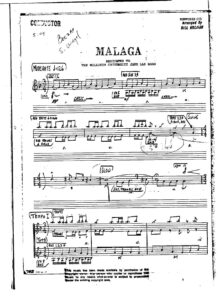 |
|
| Bill Piburn plays Antonio Carlos Jobim – Jobim (Guitar with TABS) |
 |
Bill Piburn plays Antonio Carlos Jobim – Jobim (Guitar with TABS) |
| Bill Withers – Ain’t No Sunshine | ||
| Bill Withers – Lean On Me | ||
| Bill Withers Ain’t No Sunshine Piano Vocal Guitar |
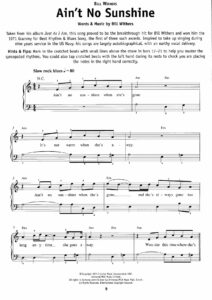 |
|
| Bill Withers Lovely Day Piano Vocal Guitar chords |
 |
|
| Billie Eilish Lovely With Khalid |
 |
|
| Billie Eilish Wish You Were Gay Lu |
 |
|
| Billie Eilish – Bad Guy Sheet Music Piano solo |
 |
|
| Billie Eilish – Dont Smile At Me Songbook (Billie Eilish) Piano Vocal Guitar |
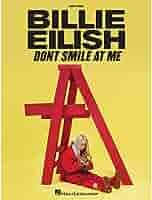 |
Billie Eilish – Dont Smile At Me Songbook (Billie Eilish) Piano Vocal Guitar contents |
| Billie Eilish – Happier Than Ever Piano vocal guitar (Billie Eilish) |
 |
Billie Eilish – Happier Than Ever Piano vocal guitar (Billie Eilish) |
| Billie Eilish – Therefore I Am Sheet Music Piano vocal Guitar chords |
 |
|
| Billie Eilish – What Was I Made For Billie Eilish piano solo arr. from Barbie OST | Billie Eilish – What Was I Made For Billie Eilish piano solo arr. 1st page | |
| Billie Eilish – What Was I Made For easy piano with lyrics from Barbie OST | Billie Eilish – What Was I Made For easy piano-with lyrics 1st page | |
| Billie Eilish – Hit Me Hard and Soft |
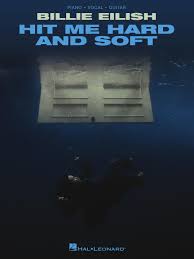 |
Billie Eilish – Hit Me Hard and Soft Contents |
| Billie Eilish Copycat |
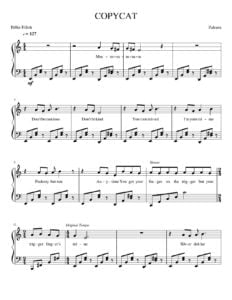 |
|
| Billie Eilish For Beginning Piano Solo (Billie Eilish) |
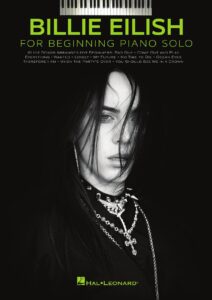 |
Billie Eilish For Beginning Piano Solo (Billie Eilish) |
| Billie Eilish ilomilo (Piano Solo) |
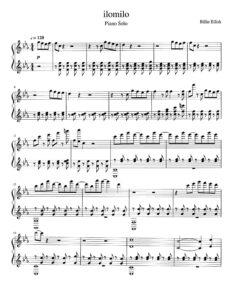 |
|
| Billie Eilish My Boy |
 |
|
| Billie Eilish The Diner (Piano solo arr.) | Billie Eilish The Diner (Piano solo arr.) | |
| Billie Eilish The Diner (Piano solo arr.) (Musescore file).mscz | Musescore File | |
| Billie Eilish THE GREATEST (Piano Solo arr.) | Billie Eilish THE GREATEST (Piano Solo arr.) | |
| Billie Eilish THE GREATEST (Piano Solo arr.) (Musescore file).mscz | Musescore File | |
| Billie Eilish When We All Fall Asleep Where Do We Go Piano Vocal Guitar |
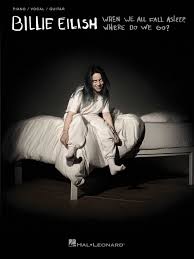 |
Billie Eilish When We All Fall Asleep Where Do We Go Piano Vocal Guitar |
| Billie Holiday – John Szwed The Musician and the Myth (Book) |
 |
|
| Billie Holiday – The Songbook (piano-vocal-guitar chords) |
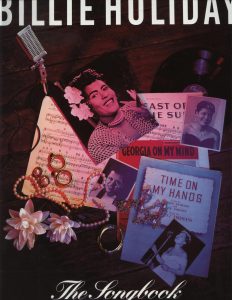 |
Holiday, Billie – The Songbook |
| Billie Holiday Diana Ross Songbook |
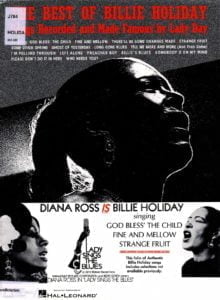 |
Billie Holiday Diana Ross Songbook |
| Billie Holiday Easy Living (Solo Guitar TAB) | Billie Holiday Easy Living (Solo Guitar TAB) Sample | |
| Billie Holiday Songbook |
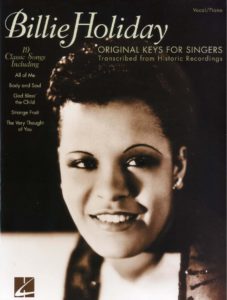 |
BILLIE HOLIDAY SONGBOOK |
| Billie Holiday The Very Best of Lady Day The Singer & The Songwriter Piano Vocal Chords |
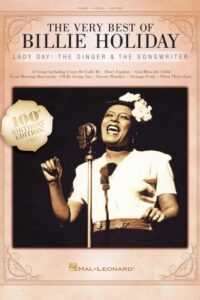 |
Billie Holiday The Very Best of Lady Day The Singer & The Songwriter Piano Vocal Chords |
| Billy Elliot (The Musical) Vocal Score |
 |
Billy Elliot Vocal Score |
| Billy Elliot – Electricity (The Musical) |
 |
|
| Billy Idol – Guitar Songbook | Billy Idol – Guitar Songbook | |
| Billy Joel – A Collection Of Songs |
 |
Billy Joel A Collection Of Songs |
| Billy Joel – Best Of Piano Solos |
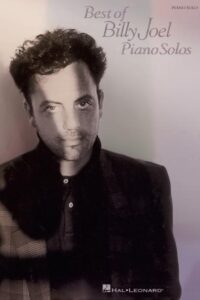 |
Billy Joel – Best Of Piano Solos |
| Billy Joel – Greatest songs (Piano & Voice) |
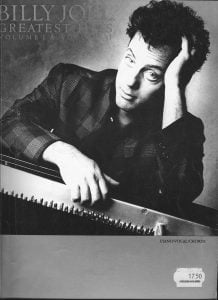 |
BILLY JOEL – GRATEST SONGS (PIANO & VOICE) |
| Billy Joel – Just the way you are |
 |
|
| Billy Joel – Just The Way You Are as performed by Diana Krall) Sheet Music Piano Vocal Guitar Chords | Billy Joel – Just The Way You Are as performed by Diana Krall) Sheet Music Piano Vocal Guitar Chords | |
| Billy Joel – Piano Man (sheet Music) | BILLY JOEL PIANOMAN | |
| Billy Joel – Root Beer Rag | ||
| Billy Joel – Shes Always A Woman | ||
| Billy Joel – The Words And Music of – by Ken Bielen (Book) |
 |
|
| Billy Joel – Uptowngirl | ||
| Billy Joel Complete Volume 1 (Piano vocal Guitar sheet music) |
 |
Billy Joel Complete Volume 1 (Piano vocal Guitar sheet music) |
| Billy Joel Complete Volume 2 (Piano vocal Guitar sheet music) |
 |
Billy Joel Complete Volume 2 (Piano vocal Guitar sheet music) |
| Billy Joel Fantasies And Delusions (solo piano) |
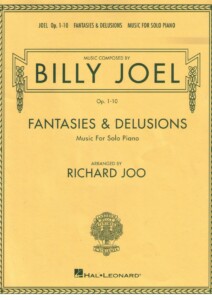 |
|
| Billy Joel Favorites Keyboard Book (Billy Joel) |
 |
Billy Joel Favorites Keyboard Book (Billy Joel) |
| Billy Joel Piano Man |
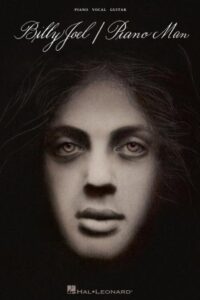 |
Billy Joel Piano Man Piano Vocal Guitar |
| Billy Joel Rock Score |
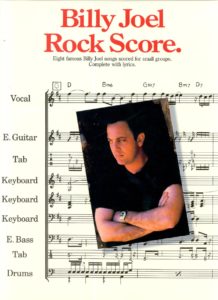 |
|
| Billy Joel The Best Of Billy Joel Easy Piano by Bill Boid |
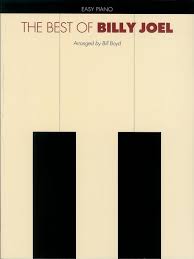 |
Billy Joel The Best Of Billy Joel Easy Piano by Bill Boid |
| Billy Joel The Keyboard Book |
 |
Billy Joel Keyboard Book  |
| Billy Preston – best of, Piano & Vocal songbook |
 |
Billy Preston – best of Piano & Vocal songbook |
| Billy Preston Nothing From Nothing | Billy Preston Nothing From Nothing | |
| Billy Ray Cyrus – Old Town Road [Remix] Sheet Music |
 |
